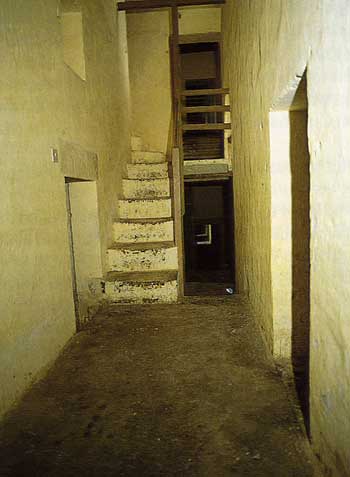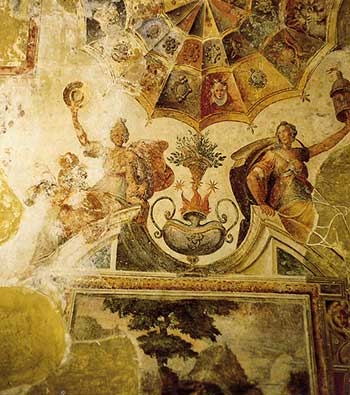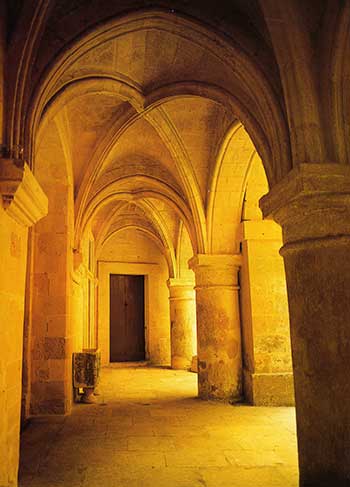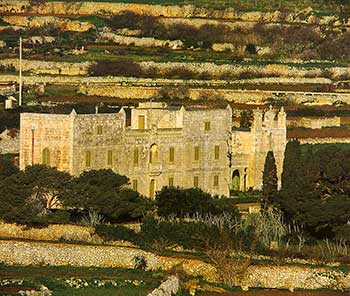When the Apostolic Delegate and first Roman Inquisitor in Malta Mgr Dusina arrived on the Islands in 1574, he did not have a residence of his own. Initially he stayed in Valletta, probably in Fort St Elmo, and occasionally at the Dominican Priory of the Annunciation in Vittoriosa. However it was necessary for him to have a palace with a prison attached to it at his complete disposal and the best place was deemed to be the vacant Castellania in Vittoriosa – formerly the Order’s Civil Courts of Justice and the residence of the Knight Castellan. Built in 1530, the Castellania seems to be an extension of a Norman cloister and is architecturally similar to a building in Mdina. Now renamed Palazzo del Santo Officio, this became the Grand Inquisitor’s seat until he was expelled by Napoleon in 1798.
The first Inquisitor set up residence on the top floor of the Castellania but the succeeding prelates of noble birth soon realised that their quarters in Vittoriosa were far inferior to what they were accustomed to – hence the continuous upgrading of the Inquisitor’s Palace. During this period, the palace underwent significant structural changes so as to make it more or less self-sufficient. These changes included; residential quarters, a library, a chapel, law courts, the construction of the garden (under Fabio Chigi 1634-39), and the enlargement of the prisons (under Gio Battista Gori Pannellini 1639-45) where graffiti by inmates is still visible in some of the cells. Apart from that, the alteration of the façade under Gerolamo Casante (1658-63) isolated the palace from adjoining buildings; the chapel and the Ruffs apartments were set up under Tommasso Ruffs (1694-98), while the main staircase was enhanced under Gio Francesco Stopani (1731-35).
Furthermore, the Palazzo seems to have had a warmer side as on the top floor the Inquisitor had his solarium where he relaxed in the sun on fine days. Sir Harry Luke observes that this side of the building “overlooks the execution – yard; but with a refinement and delicacy of feeling the windows here are raised so that the great man should not be inconvenienced by the sight of the unpleasant end of his victims.”
As with the Grandmaster and the Bishop, the Inquisitor also had his summer residence. In 1625 Inquisitor Onorato Visconti built a summer residence on the Girgenti estates which became the property of the Inquisition when these lands were confiscated from the heretic Matteo Falson.Being the only surviving Inquisitor’s Palaces in Europe, the Inquisitor’s Palace and the Inquisitor’s summer residence in Malta are of unique historical importance.
 |
 |
 |
|
Corridor leading to Inquisitor's prism cell
|
Remains of ceiling mural in the entrance hall of the Inquisitor's Palace
|
Main courtyard
|
 |
|
Girgenti
|

